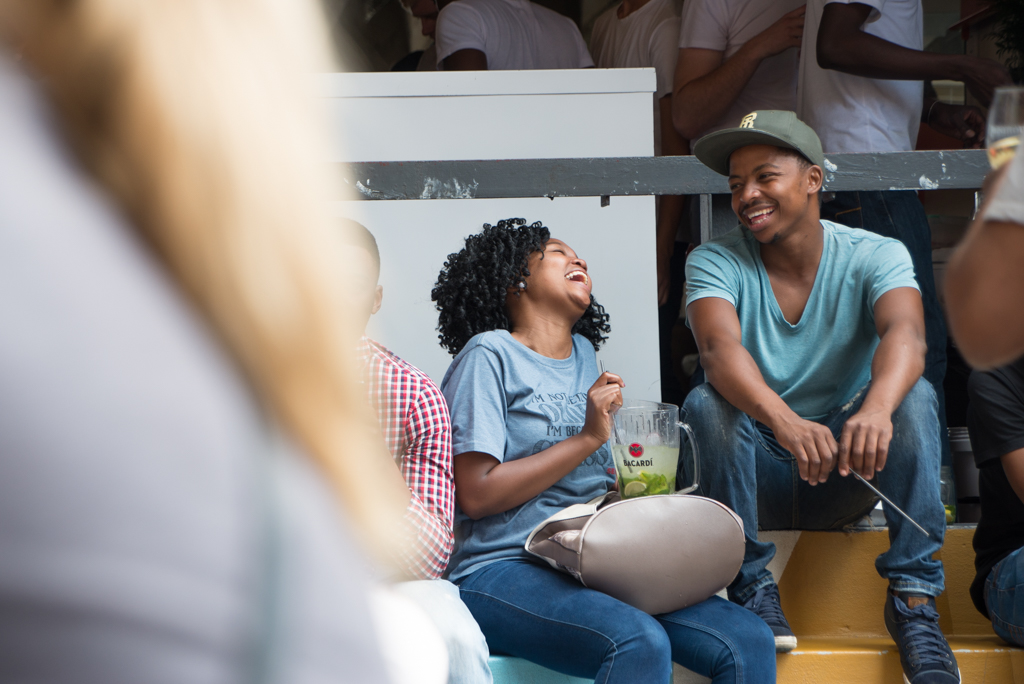JOZI JAZZ
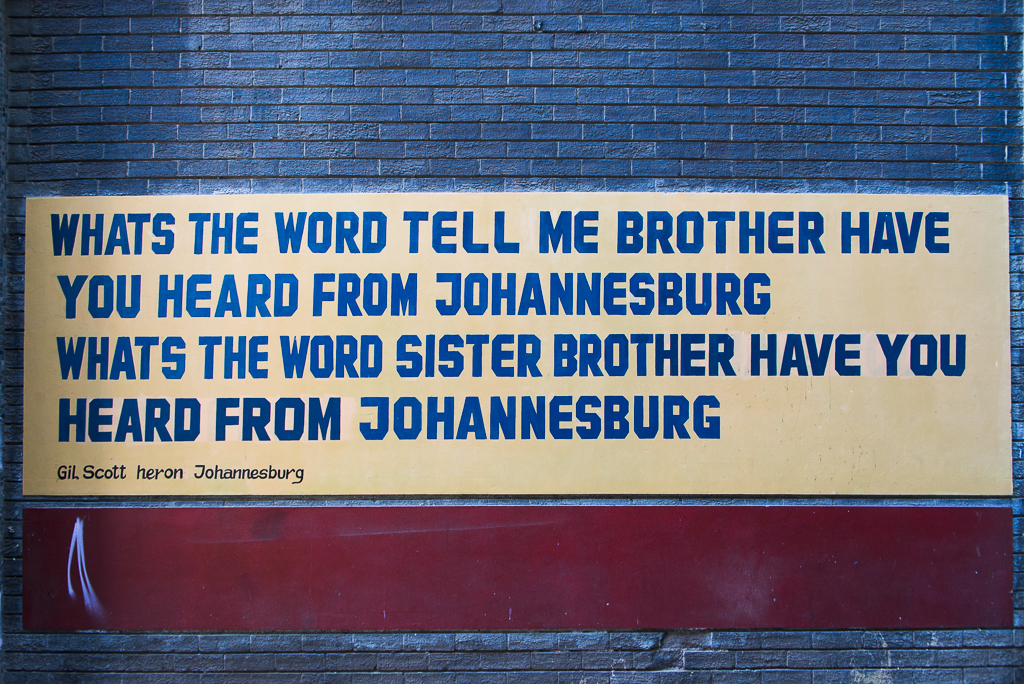
The lyrics of Gil Scot Heron’s Anti-Apartheid Hymn of 1971 are painted on a wall in Braamfontein, an inner city suburb. On Saturday afternoons, the beautiful people of Johannesburg chill in the bars, the cafés and clubs to a soundtrack of Jazz, Funk and Hip Hop, all under the loving eyes of Nelson Mandela. He smiles from a high rising building that features his bigger than life portrait as a mural.
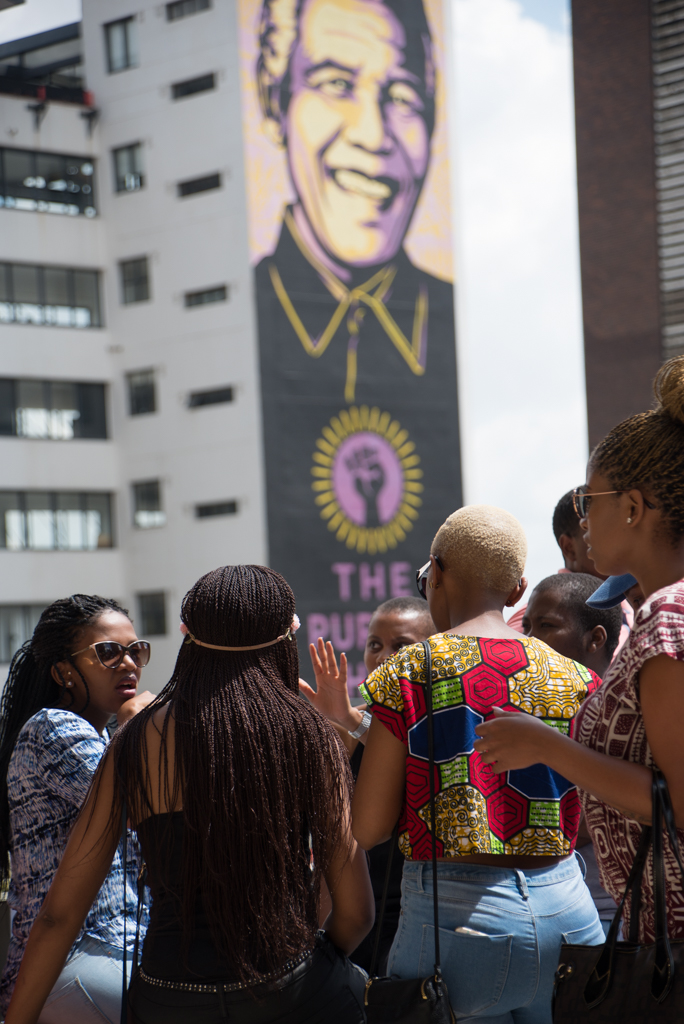
Jozi, as Johannesburg is lovingly called by its inhabitants, is off the beaten track of mass tourism. South Africa’s biggest city serves mostly as a hub to travel on to the national parks and safaris. Yet, the city has a lot to offer: There is the moderate climate of 1800m altitude, there are the giant jacaranda trees (Johannesburg is the biggest urban forest in the world), there is the unbeatable friendliness of its locals. And then there is its breath-taking history: The victorious struggle against apartheid started and thrived in the shebeens, the “speak easies” and music clubs of the black neighborhoods. Music and politics have been inseparable ever since. Undoubtedly, Johannesburg is still struggling with the problems of the past, with corruption and an influx of illegal immigrants – crime and poverty are evident in the city center. Yet, its young and thriving music scene is still and again in full bloom. Both a colorful testimonial of the young rainbow nation’s creativity, and a symbol that bitter roots can bring up the most stunning flowers.
Ubuntu on the bandstand
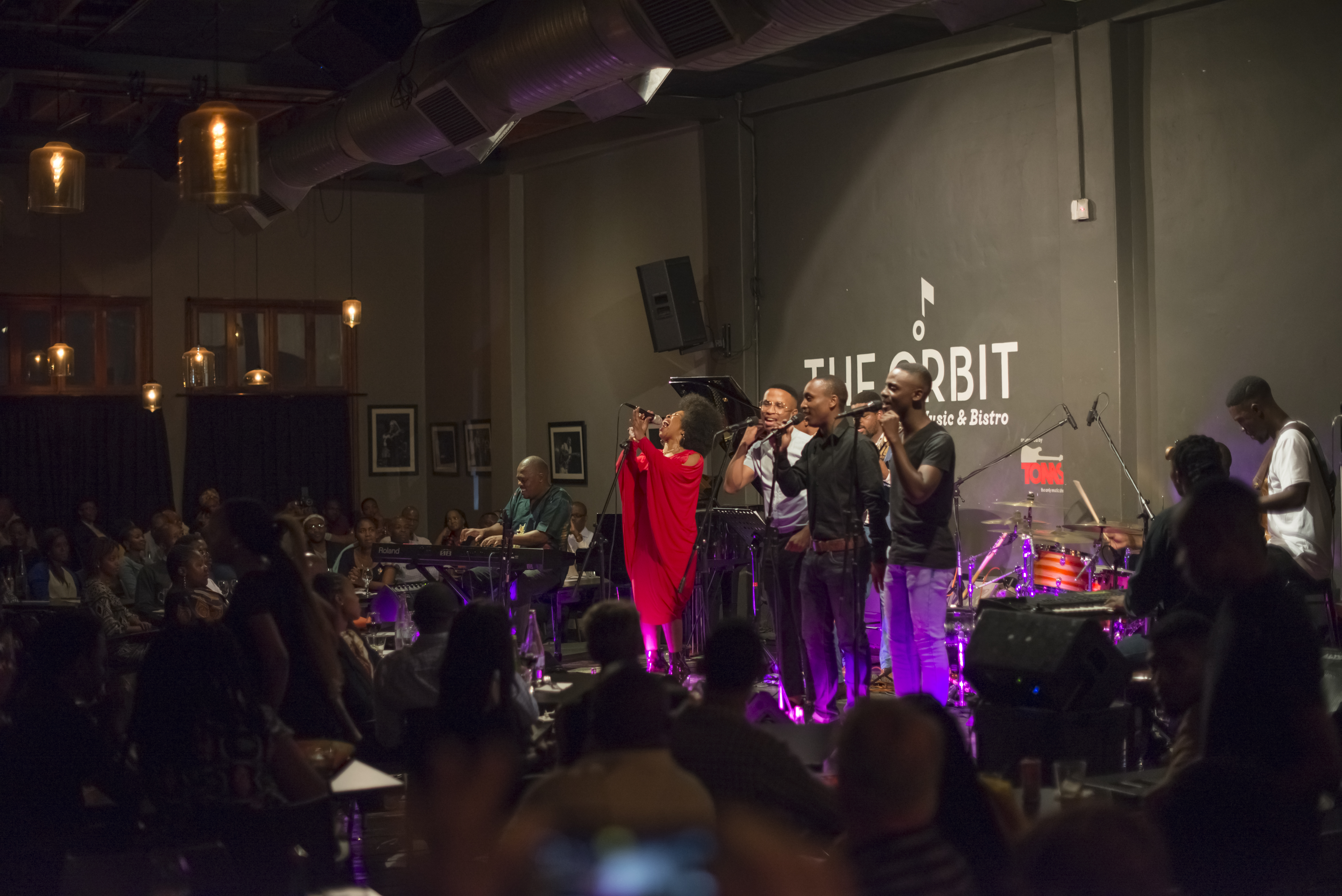
Suthukazi Arosi has put a spell on the audience: The crowd has long jumped to their feet, leaving their dinner plates and wine glasses, their fancy evening clutch bags forgotten on their tables. Dancing with their hands in the air, they chant back and forth with Suthukazi in Xhosa, one of the many tribal languages spoken in South Africa. Arosi sports a red evening gown, a massive Afro hair do, and a veritable Aretha Franklin-attitude. Her vast vocal range and power bear witness to an inner, spiritual strength. “I am a prophet” She will later say. ”Music is within me!” And: “We South Africans have to stand together.” Jazz singer Arosi spreads the spirit of “Ubuntu” like frankincense. Ubuntu is not only the name of one of her songs, but the very philosophy of Nelson Mandela, the basis on which the peaceful transition from Apartheid South Africa into the “Rainbow nation” was achieved. Ubuntu, a Zulu word, in its most basic definition, means a person is a person only through other people – or a person is nothing without the community.
This spirit is also manifested on the overpopulated stage: Arosi was called up to sit in with Dumza Maswani, a local up and coming Jazz- and Soul singer, whose 9-piece band is on the bill of the Orbit tonight, Johannesburg’s most prestigious Jazz club. Contrary to his three background singers, twenty-somethings clad in hipster outfits, Dumza himself wears a traditional knee-length African shirt on top of black pants. His voice is deep and velvety, soothing, a healing voice as he likes to call it himself. He is joyful and charming. As he sings he frequently leans into the audience, making eye contact with his listeners.
It’s a Wednesday night but the place is packed. The crowd is sophisticated and educated in both music and style, mixed in age and race, but unified by their appreciation of Jazz music. Zyanda Febana and her boyfriend Lunga Mkila, both in their late thirties, are usuals at the Orbit. As they share a bottle of red wine, they let Maswani’s music pass through their bodies and faces, pantomiming, swaying, clapping, singing along in call and response. They seem obsessed by a spirit, the spirit of Johannesburg Jazz it must be.
Kofifi – Where the light shines in the dark
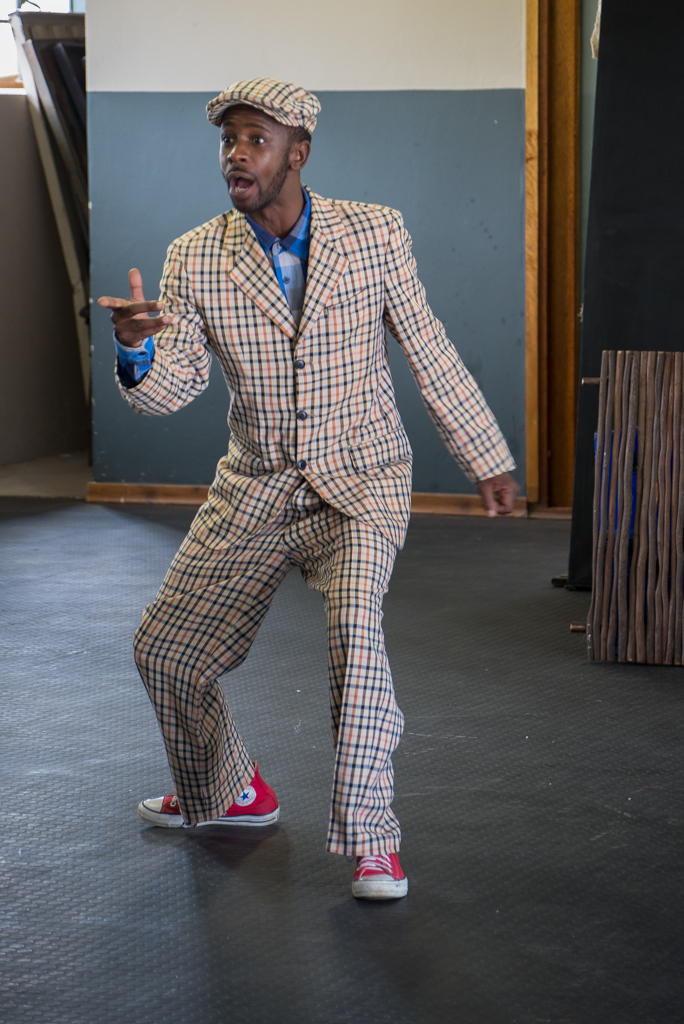
Thursday afternoon in Tembisa, a township in the North of Johannesburg, Bhanzela Masango, 29, is rehearsing with his dance group, The Tembisa Revolution. Tembisa is poverty stricken: The township has grown through the influx of immigrants, squatting in corrugated iron shacks, and is held in a firm grip by drugs and gangs. The more surprising to see the members of Tembisa Revolution in their costumes: zoot suits and skirts of the 1940ies and 50ies, the old-fashioned aprons and hairbands of domestic workers, the jumpsuits of goldminers, all bought second hand. The dance company specializes in the two vernacular dances of the Johannesburg townships: Gumboot-dancing, the rhythmic stomping and boot-beating of the mine-workers, and Pantsula, the slang word for gangster, which appears like a mixture of silent tap-dancing and Vogueing.
“Dancing and music are not only our ticket out of the misery” Masango, who like his peers suffers from the high unemployment rate, says. “It is also a way to express ourselves in an artful and skillful way, and to find pride in our own roots and culture.” The company’s show tells the story of Sophiatown, the legendary freehold suburb of Johannesburg, where from the 1930ies until its violent obliteration in the late 1950ies, black culture thrived. “Kofifi”, as the locals called Sophiatown, means where the light is in the dark.
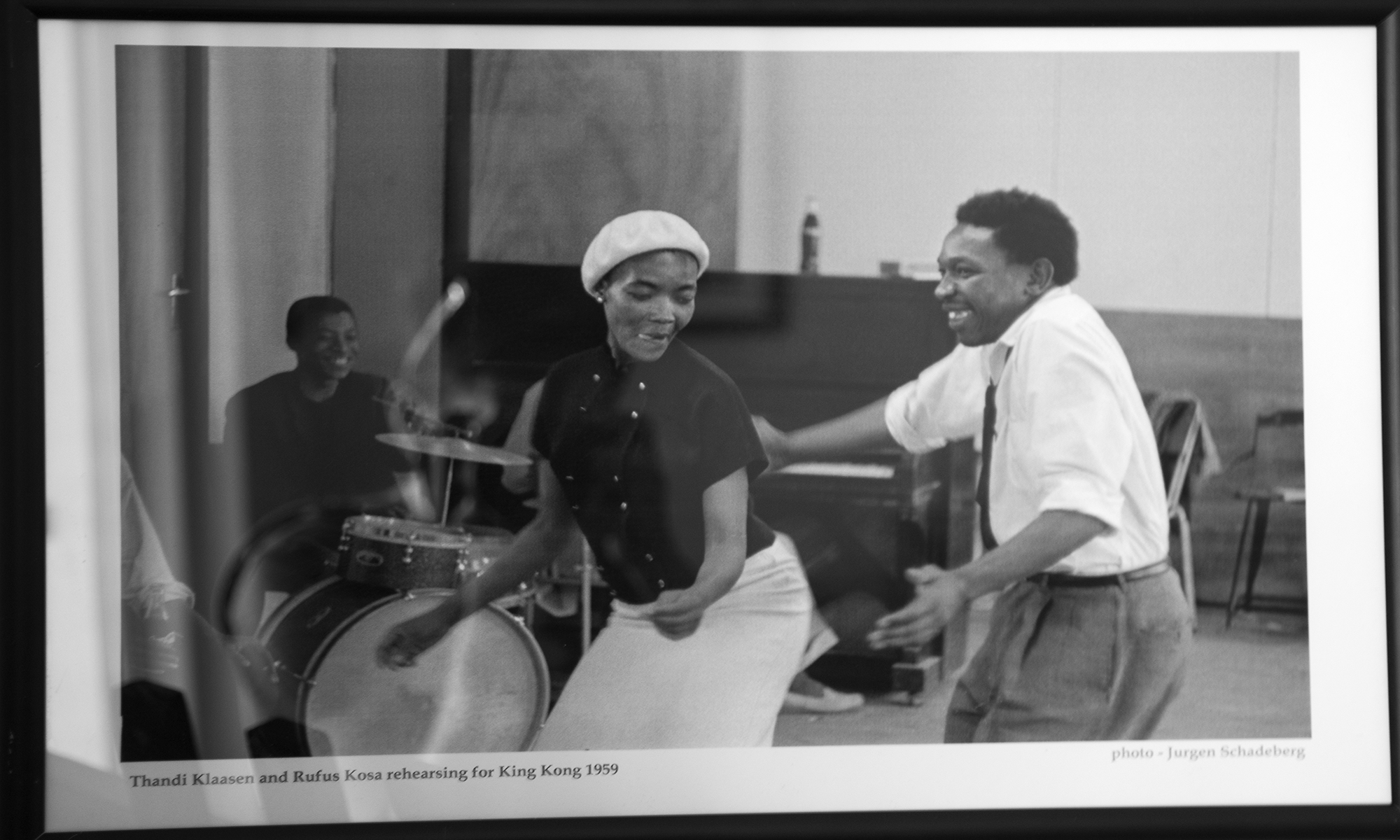
Comparable to the “Harlem Renaissance” black writers, painters, photographers and most notably musicians created their own culture and lifestyle, influenced by American movies and jazz. Marabi – the fusion of American Jazz and traditional South African music, was born here, and well documented by Drum, the only black literary magazine which covered with pride music and politics. When the neighborhood was bulldozed according to the newly installed Apartheid laws, its inhabitants were deported to the surrounding “Meadowlands”, later known as Soweto, the South West Township. The song “Meadowlands”, immortalized by Sophiatown-local and civil rights activist Miriam Makeba, tells the sad story of the forceful removal.
Miriam
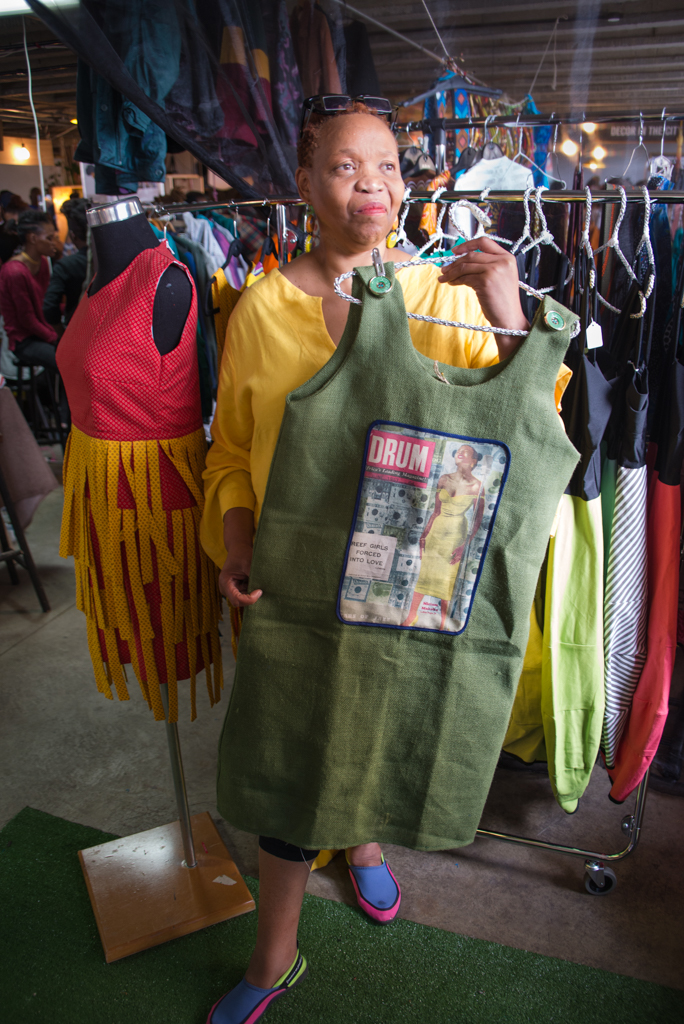
“Neighborgoodsmarket”, held every Saturday afternoon in the City Center, is the perfect blend of party and market. To the sound of local jazz- or Soul bands, farmers offer their homemade bread, wines, hams and other goodies while local fashion designers display their traditionally inspired clothing lines. Among the colorful jewelry and Shweshwe-prints, Mohau, an elegant woman in her fifties, offers her own collection: On plain dresses in green, red or yellow she has appliquéd textile replicas of old covers of Drum magazine, featuring singers Miriam Makeba and Dolly Rathebe, another Sophiatown star. “Sophiatown has always been a great inspiration to me,” Mohau says. “My mother played Jazz-records when I was still a girl in Soweto. Miriam Makeba was my idol. She and Dolly Rathebe were strong women, gang-members even. One must not forget, that Sophiatown was also a place of emancipation, of encouragement for women.”
Sophiatown: The Mix
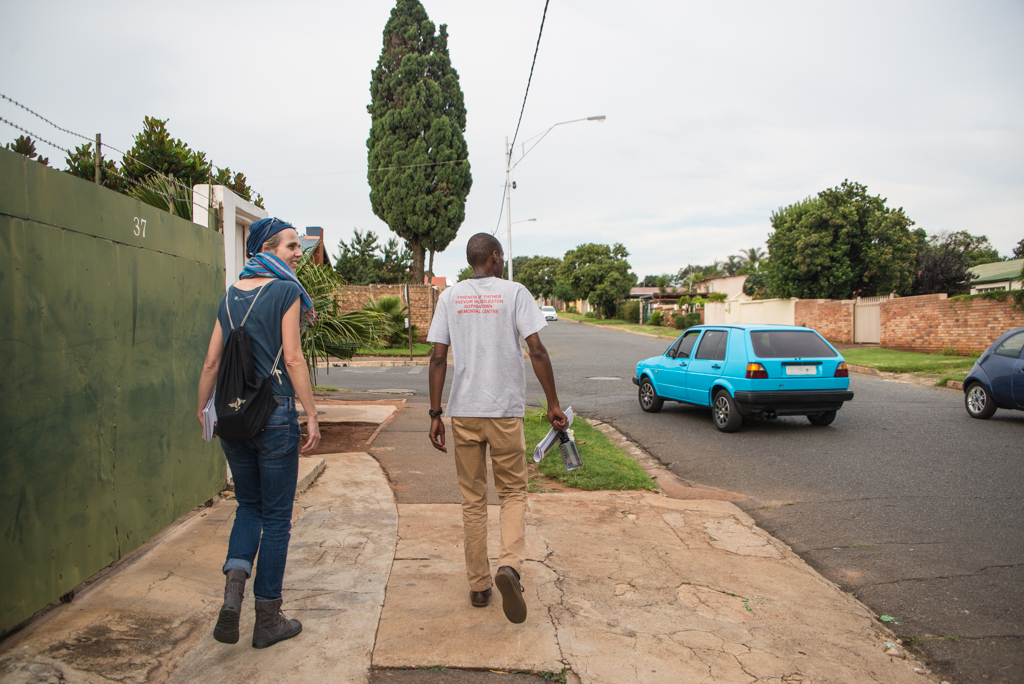
The sun heats up the cracked asphalt of Sophiatown. Tshebo, long and lanky, strides along with his thin arms dangling. He is endlessly patient as he leads a small group of interested tourists and locals through his neighborhood, generously sharing his wisdom: Where once the famous Odin movie house stood, which featured American movies during the week and hosted weekend-long jazz parties and secret ANC-meetings (African National Congress, the party of Nelson Mandela), where the famous Shebeen “39 steps” was located, a place of illegal drinking and Makabi playing, where the big oak stood, from which desperate men hung themselves rather than be deported.
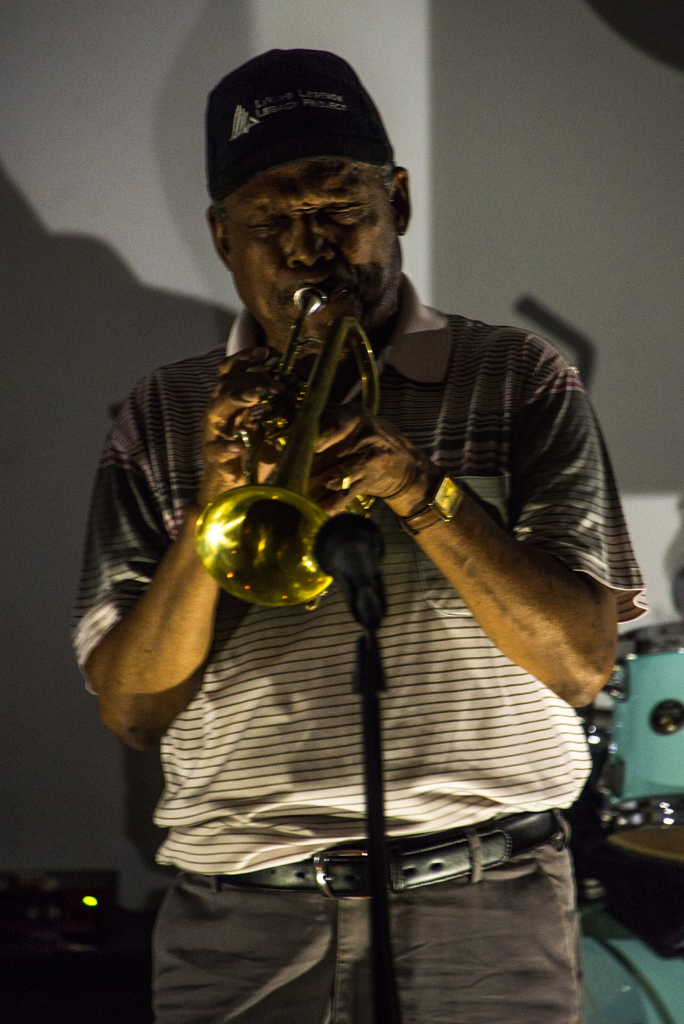
Tshebo, who is proud of his hometown, works for The Sophiatown Cultural Heritage Center, which organizes tours and concerts to revive the old spirit. Tonight, trumpeter Bra Stompie Manana is on the bill. This octogenarian already blew his horn in the old Sophiatown. He gives a concert to a small mixed group, a few tourists from Europe, a few well-situated couples who have recently moved in this suburb, others, mostly older folks, have commuted from other townships for the show. Everyone brought their own bottles and baskets to nibble on. The venue is small and poorly lit – Bra Stompie does not like to stand in the limelight. He has never been a star, he only seems happy that Old Sophiatown is back – or will be back. “It used to be like that everyday when I was young!” He gets sentimental. Stompie’s compositions are driven by the fast, rhythmic melodies of Bebob, but carried by the bouncing, swaying and entrancing African grooves of Makabi. He ends the set with his tune Kofifi. With the first notes people jump up and start dancing, jiving in spontaneously found couples of old and young, black and white: Sopthiatown, the mix.
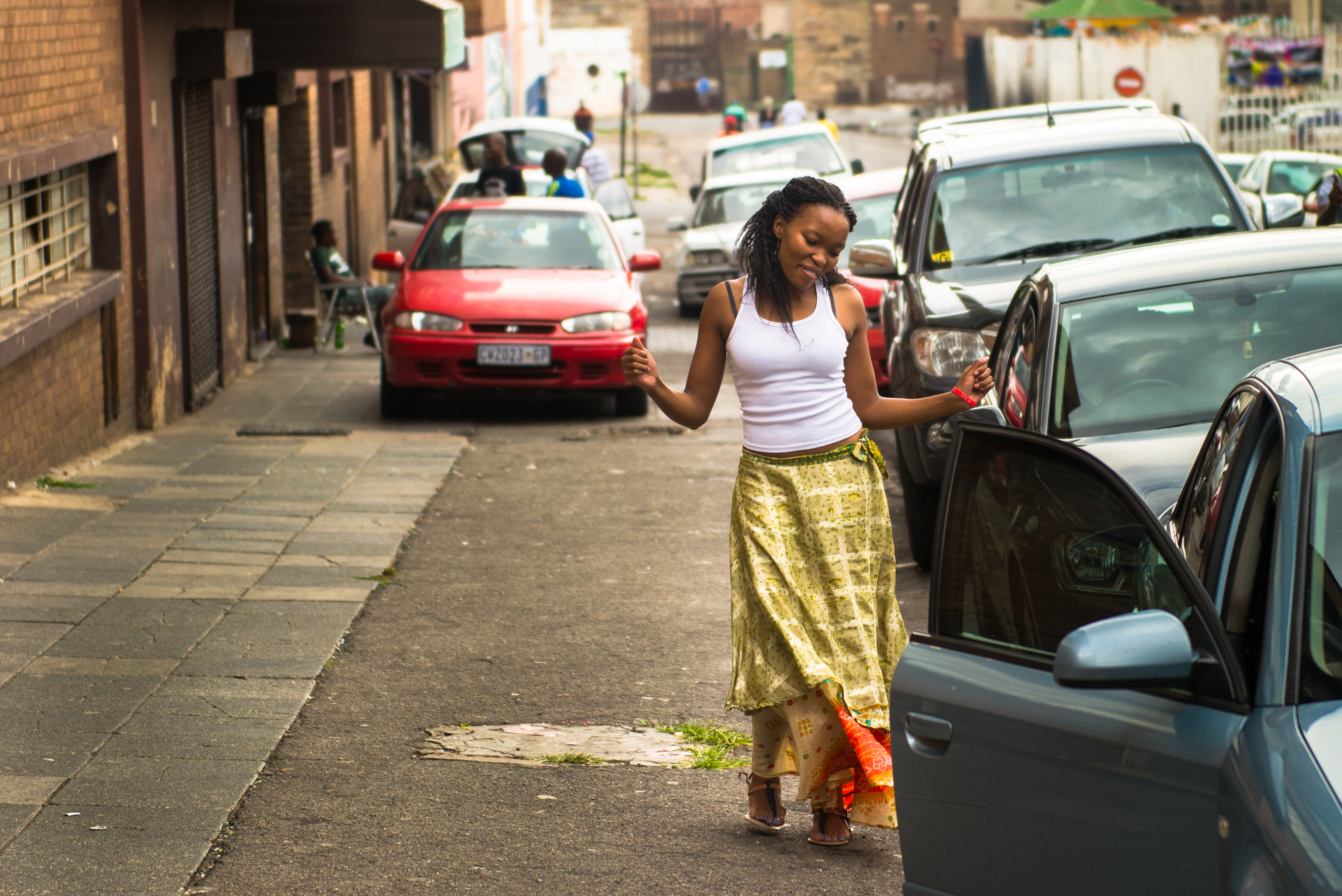
Johannesburg is a raw city, as beautiful as it is dark. It has its up- and downbeats, its off-beats and discords, its major and minor scales. But it swings in a captivating rhythm. That’s the Jazz of Johannesburg.
—

Getting there and around: OR TAMBO airport in Johannesburg is well connected worldwide and with the city through a reliable and fast train service “Gautrain”. In the city public means of transport are scarce, taxis not considered safe. Uber is recommended and commonly used among locals.
Where to stay: There are several hotels, guesthouses, B&B’s and airbnb’s in the suburbs Rosebank and Parkview, which are central, safe and quiet. Melville is a lively, young and hip suburb with many bars and an internationally well-frequented hostel.
The Purple Shall Govern mural of former president, Nelson Mandela, was created by US street artist Shepard Fairey, and cannot be overseen in Juta Street, Braamfontein.
The Orbit http://www.theorbit.co.za/ features concerts and an exquisite menu daily. The adjacent suburb of Newton features many places of reference to legendary Jazz icons on its heritage tour: http://www.newtown.co.za/heritage/view/index/kippies
At Sophiatown The Mix: Cultural Heritage Center http://sophiatownthemix.com/ tours can be organized at 70Rand (ca. € 5,-) per person.
While it is not advisable to venture into the townships, cultural tours can be organized in Soweto, for the Apartheid Museum, cultural, musical or culinary activities. http://www.soweto.co.za/html/p_hector.htm
Every Saturday, dress to impress, shop and nibble at the Neighbourgoodsmarket. http://www.neighbourgoodsmarket.co.za/blog/
Pantsula Dancing:

